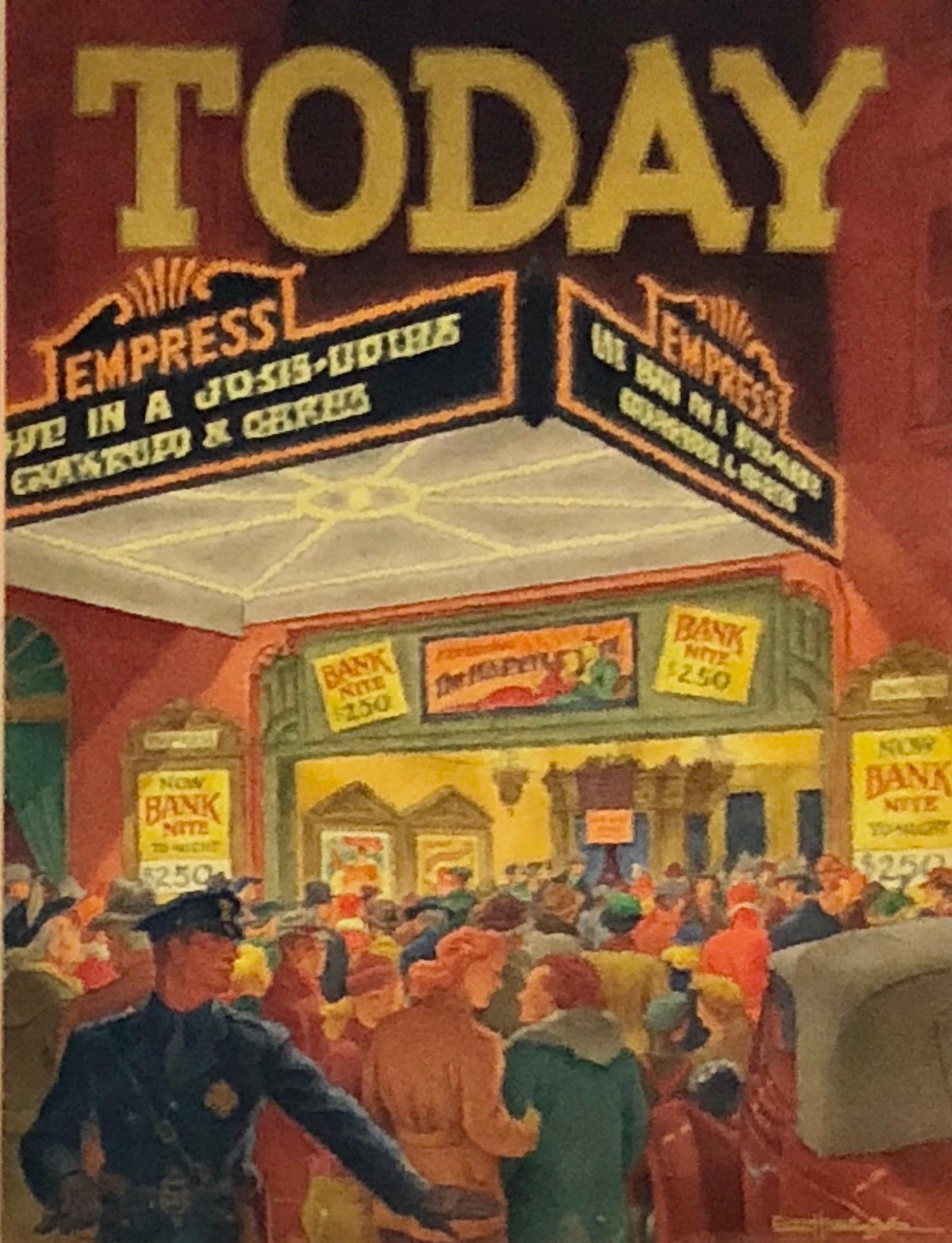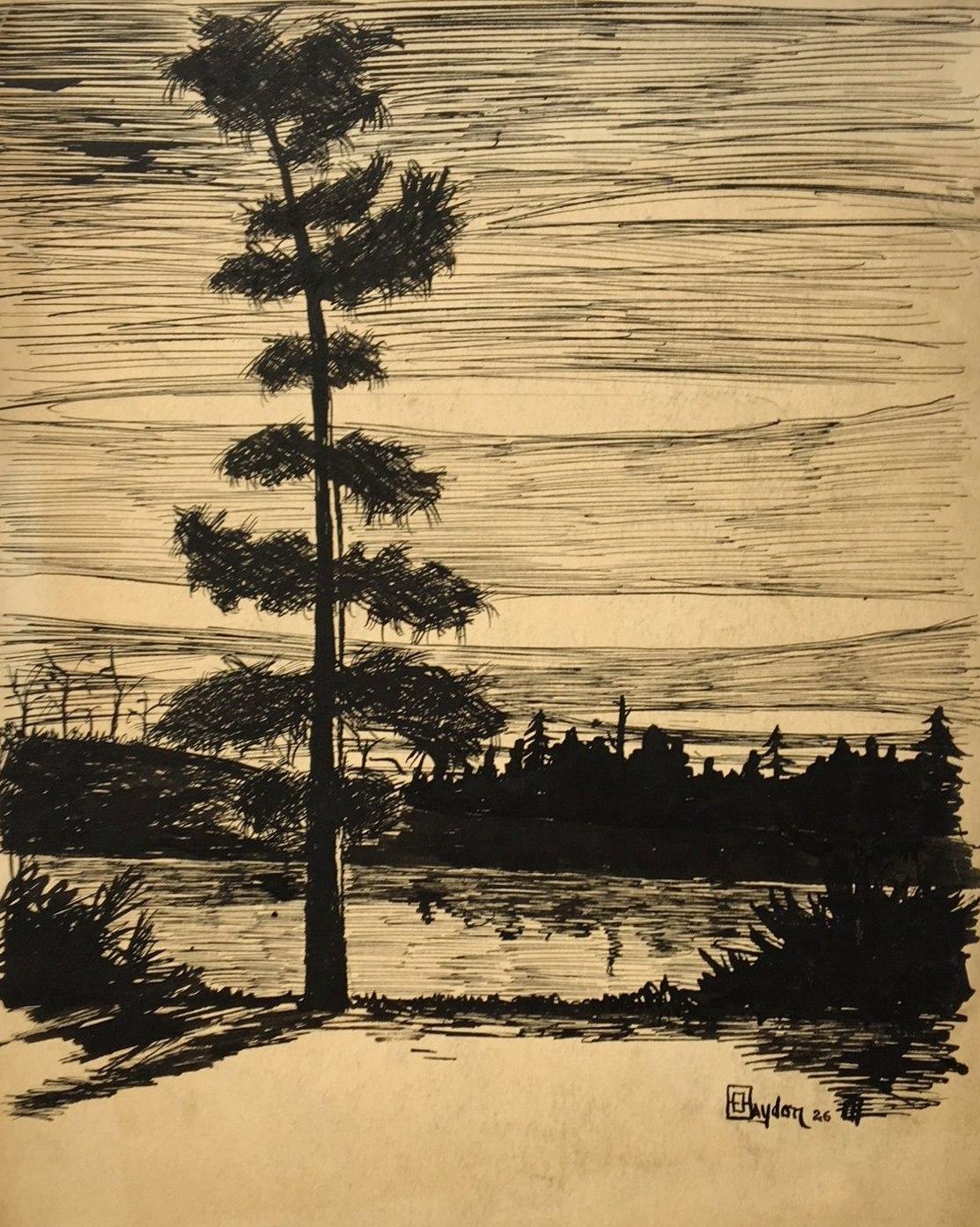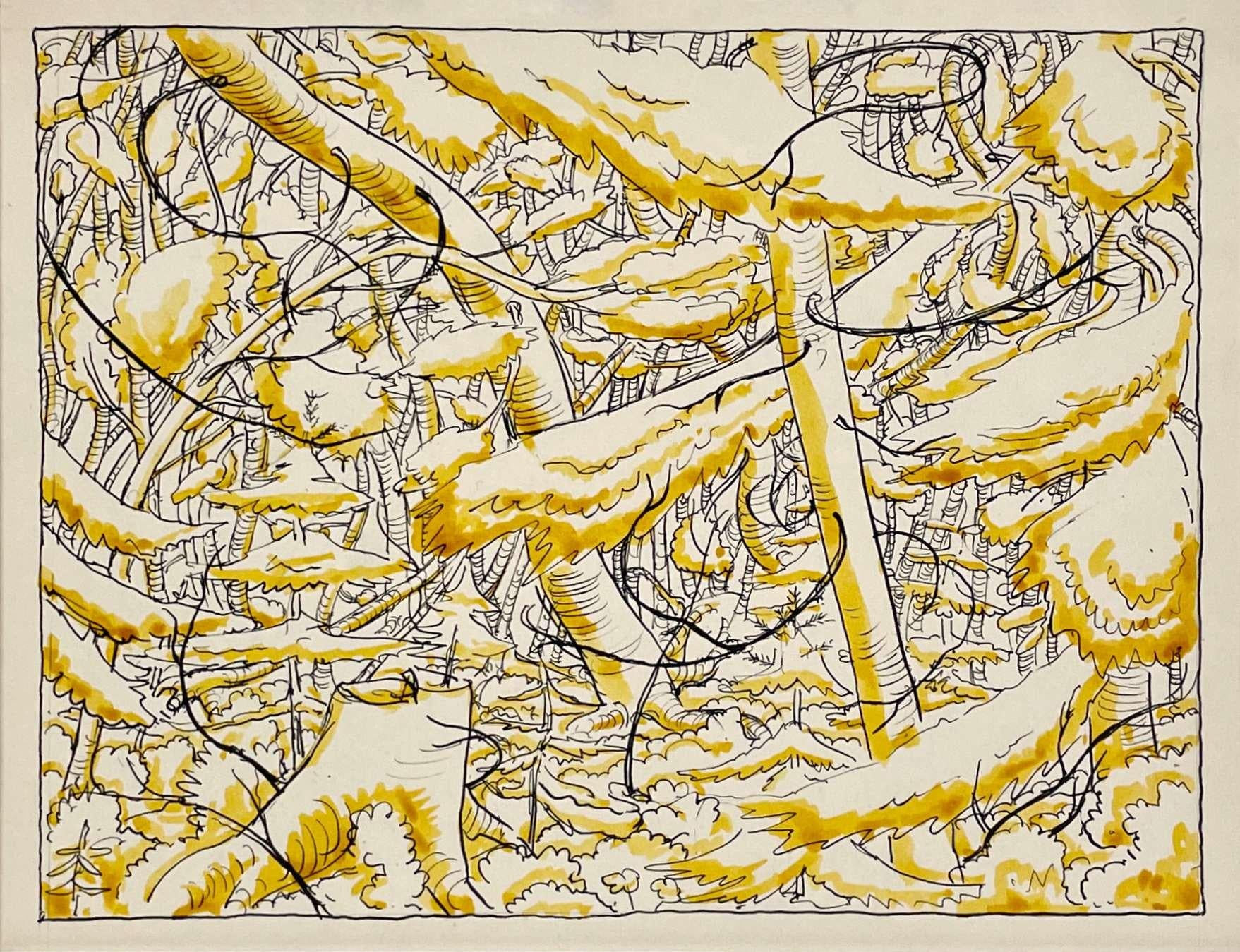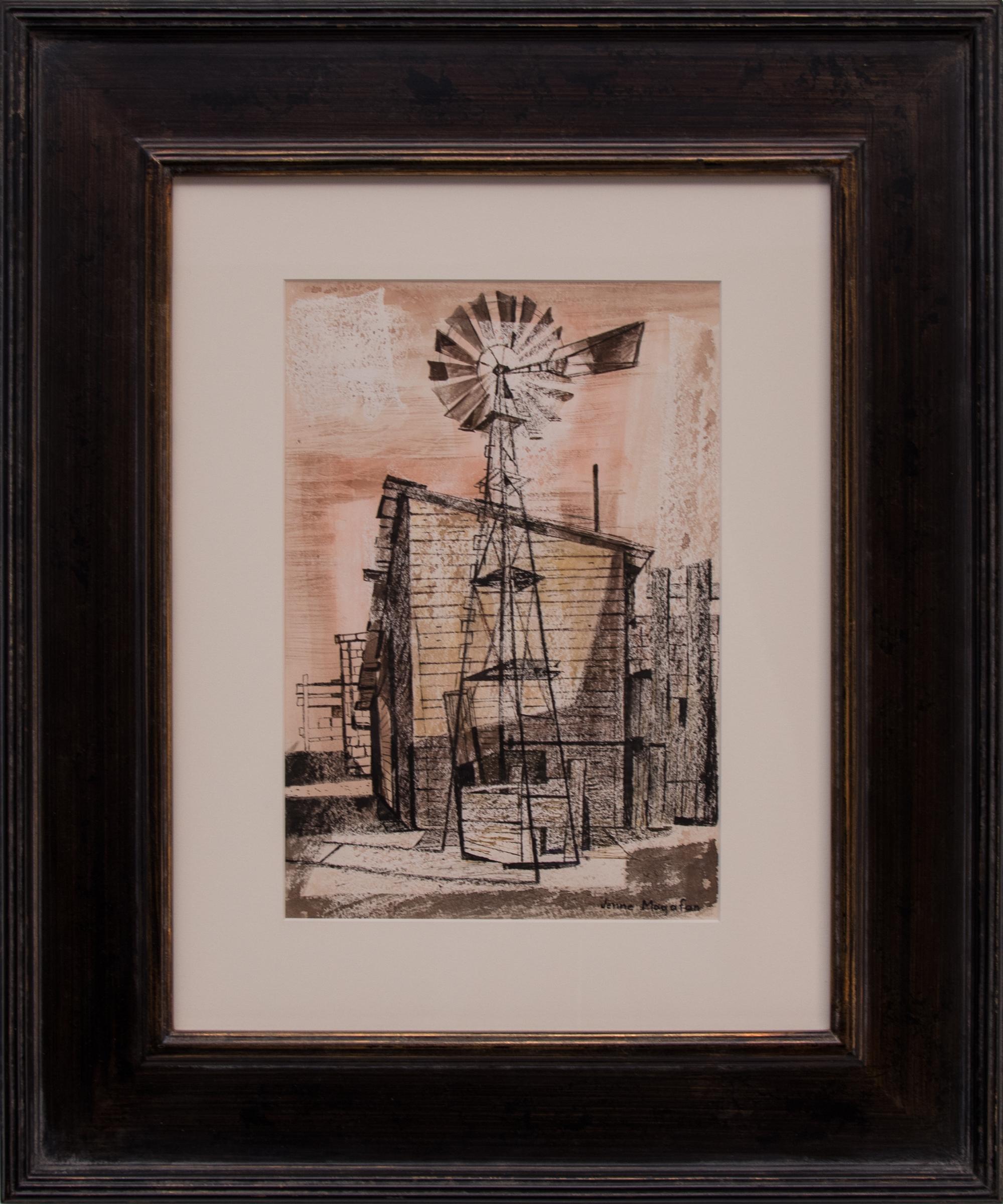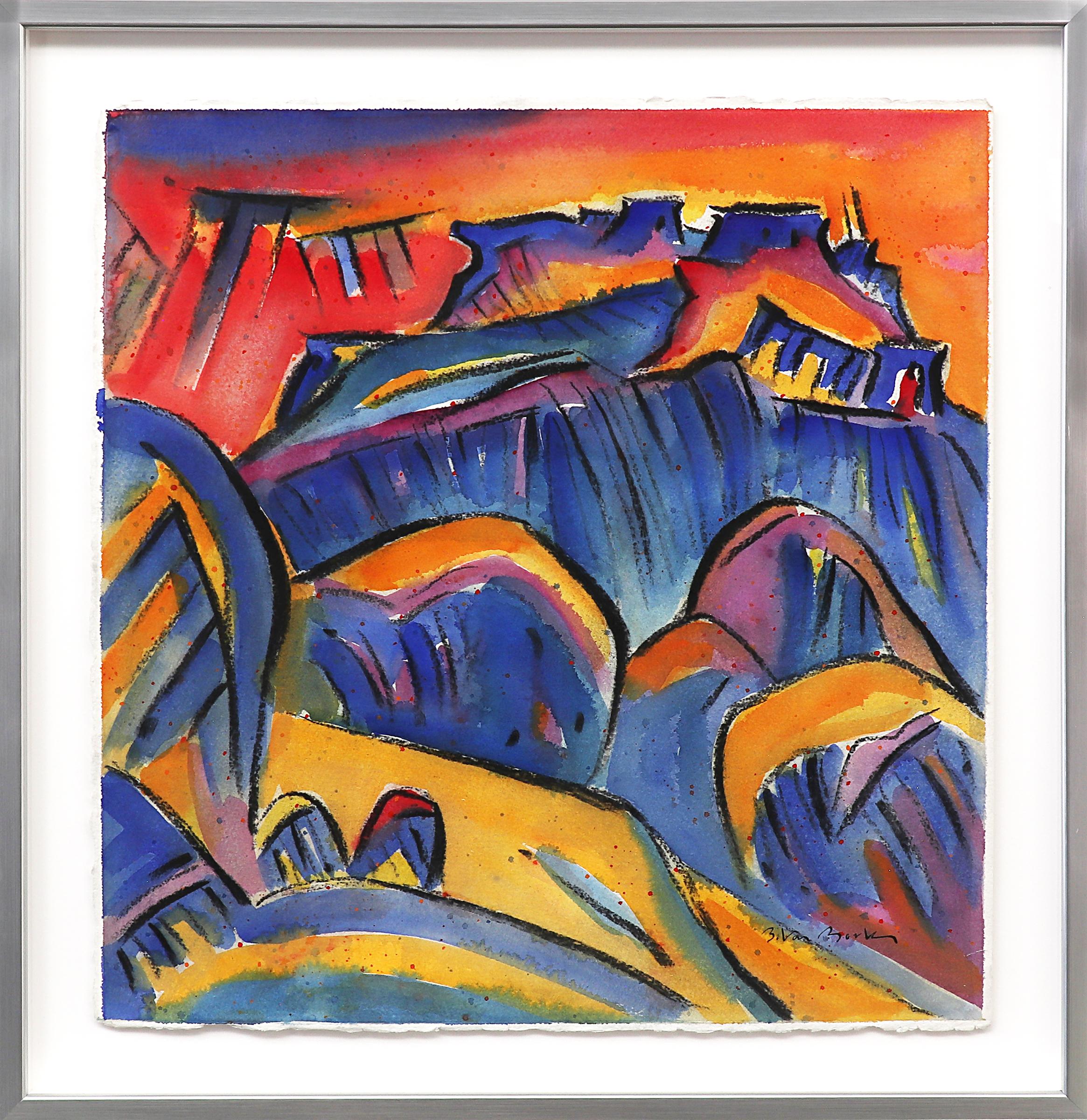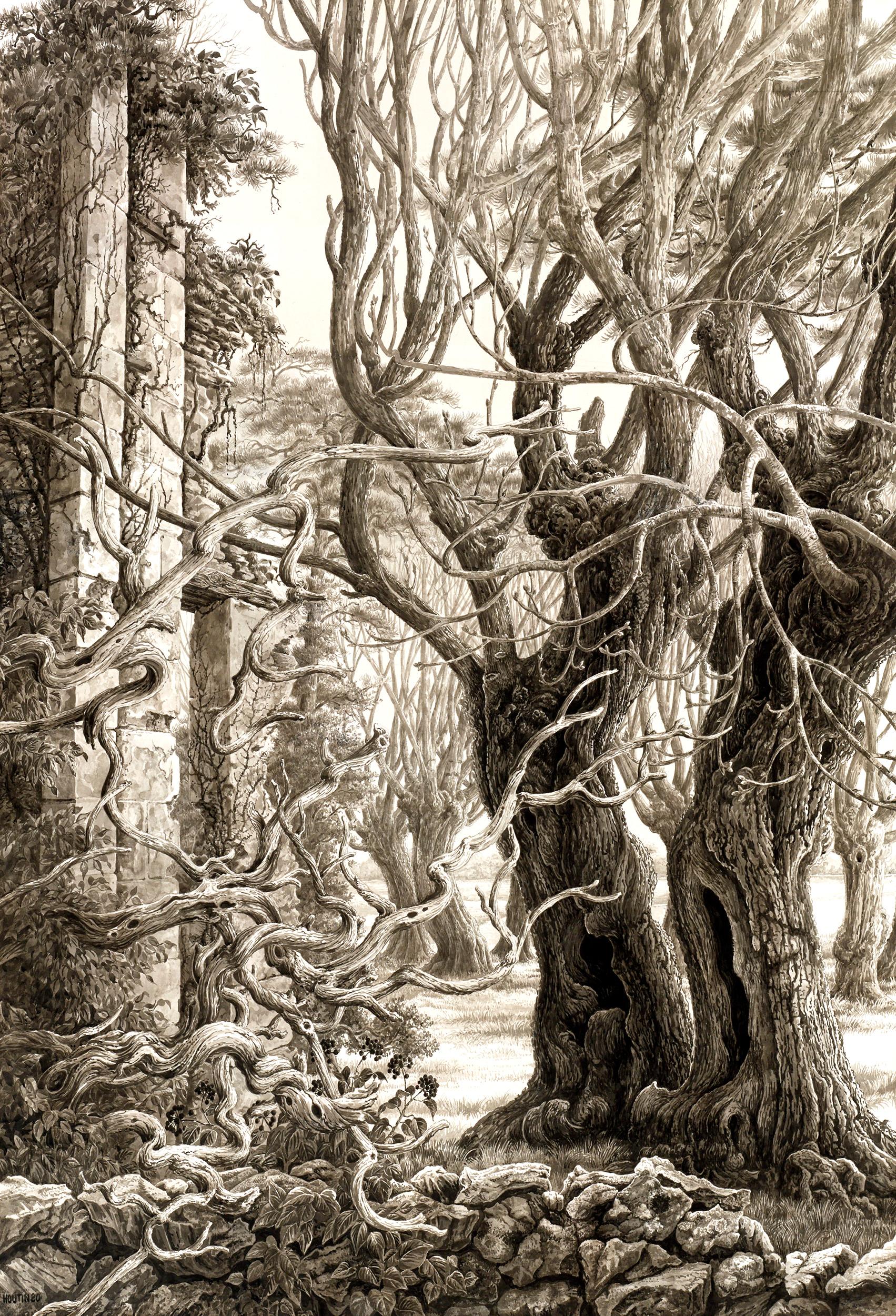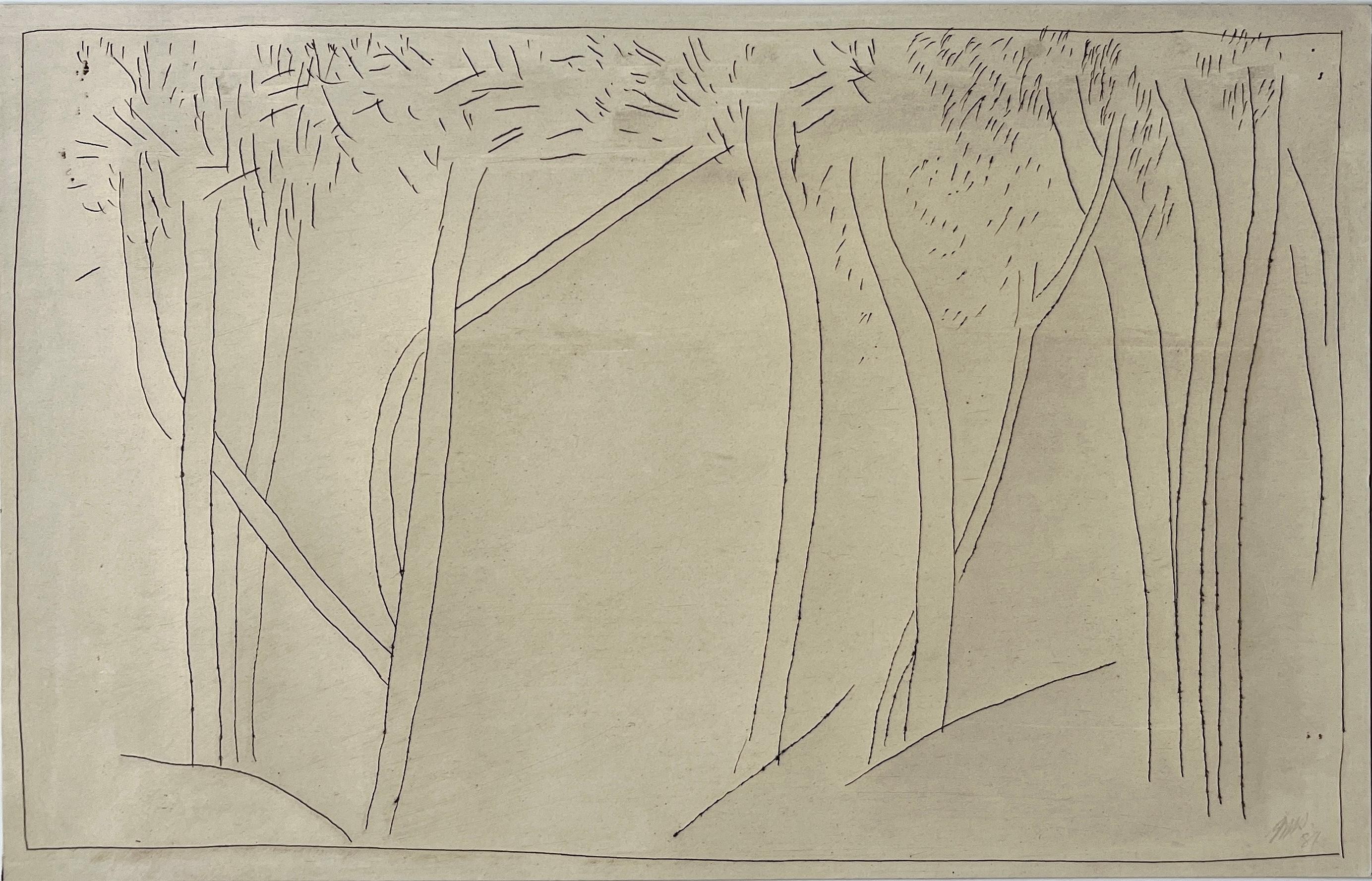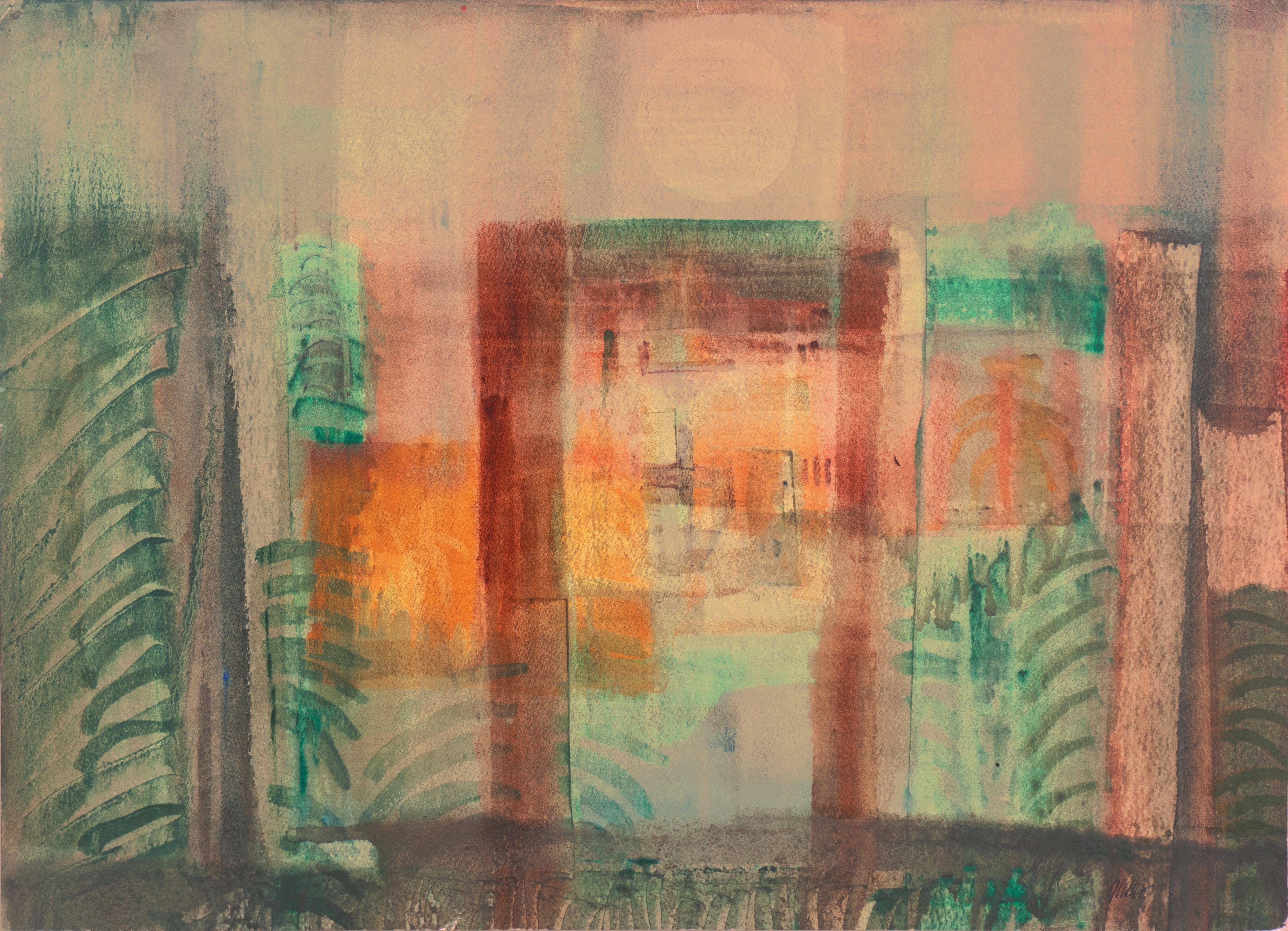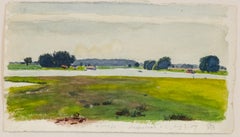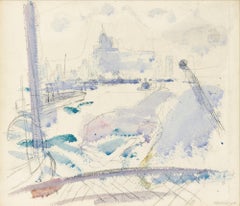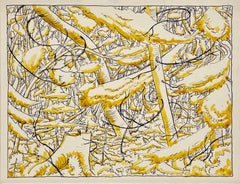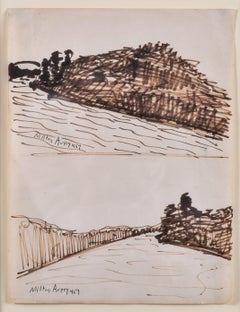
"Inlets, " Milton Avery, Provincetown, Cape Cod, New England American Modernism
View Similar Items
Milton Avery"Inlets, " Milton Avery, Provincetown, Cape Cod, New England American Modernism1957
1957
About the Item
- Creator:Milton Avery (1885 - 1965, American)
- Creation Year:1957
- Dimensions:Height: 11 in (27.94 cm)Width: 8.5 in (21.59 cm)
- Medium:
- Movement & Style:
- Period:
- Condition:
- Gallery Location:New York, NY
- Reference Number:1stDibs: LU184129924972
Milton Avery
Milton Clark Avery was born in 1885 in Altmar, New York. Largely self-taught, Avery is today regarded as one of the great early modern American artists; his inspired palette, simplified forms and unwavering commitment to a figurative tradition have secured him a place not only in the canon but also in the hearts of the American public.
Always at odds with the dominant style of the time, be it the American Scene Painting and Social Realism of the 1930s and '40s or the Abstract Expressionism of the 1950s, Avery's oeuvre is a labor of singular dedication. As a boy, Avery worked factory jobs to help support his large family following their move to Connecticut in 1898. He did not seriously begin to pursue art until sometime following his father's death in 1905, when he intermittently attended classes at the Connecticut League of Art Students. He made his artistic debut in 1915 at the Wadsworth Atheneum's Fifth Annual Exhibition of Oil Painting and Sculpture.
In 1925 Avery relocated to New York to be closer to his future bride. Following his marriage in 1926 he was able to quit working and paint full time. At this time Avery replaced the light-drenched palette of his Hartford days with more muted tones. He also exchanged his heavy impasto for thin washes of pigment, which he used to create veiled fields of color.
In 1927 Avery exhibited with the Society of Independent Artists. Success quickly followed. Two of his paintings were selected for inclusion in a 1928 group show at the Opportunity Gallery in New York. Also in 1928, renowned collector Louis Kaufman became the first person to purchase a painting by the artist; and in 1929 Duncan Phillips purchased Winter Riders (1929) for the Phillips Memorial Gallery, making it Avery's first painting to enter a museum collection.
Avery's signature figurative style characterized by simple forms and flattened shapes filled with arbitrary color "in the manner of Matisse" was fully developed by the 1940s. His work as a colorist greatly influenced succeeding generations of artists, specifically Color Field painters Mark Rothko, Barnett Newman, and Adolph Gottlieb. In 1944 he was given his first solo museum exhibition at the Phillips Memorial Gallery. That same year, he entered into a contract with famed dealer Paul Rosenberg, in which Rosenberg agreed to purchase 25 of Avery's paintings twice a year.
In 1952 the Baltimore Museum of Art hosted Avery's first museum retrospective, and Avery was the subject of a major article in Arts magazine by eminent art critic Clement Greenberg. In 1960 the Whitney Museum of American Art hosted his second museum retrospective.
Find authentic Milton Avery prints and paintings on 1stDibs.
(Biography provided by Helicline Fine Art)
- "Sheepshead, Brooklyn, Long Island" Oscar Bluemner, Modernist WatercolorBy Oscar BluemnerLocated in New York, NYOscar Bluemner Sheepshead, Long Island, 1907 Signed with the artist's conjoined initials "OB" and dated "4-30 - 5 - 30" / "Aug 3, 07" Watercolor on paper 6 x 10 inches Provenance: J...Category
Early 1900s American Modern Landscape Drawings and Watercolors
MaterialsPaper, Watercolor
- "New York from the Ferry" John Marin, American Modernism Watercolor, CityscapeBy John MarinLocated in New York, NYJohn Marin New York from the Ferry, 1914 Signed and dated lower right Watercolor and graphite on paper 11 x 12 3/4 inches Provenance: An American Place, New York Kennedy Galleries, Inc., New York Christie's, New York, March 16, 1990, Lot 278 Private Collection (acquired from the above) Sotheby's New York, American Paintings, Drawings, & Sculpture, October 2, 2014, Lot 10 A major figure in early twentieth-century modernism, John Marin captured the colliding energies of the American urban scene and the vibrant contrasts of natural elements in the coastal landscape of Maine and other countryside locales. As one of the premier watercolorists of his era, Marin developed a light, spontaneous style ideally suited to conveying the freshness and flux of city and country experience -- his watercolors are often considered to match in strength those created by Winslow Homer in previous century. At the same time, Marin's sensitivity to mass, form, color, and line and their dynamic interchanges provided a precedent for the Abstract Expressionist movement of the late 1950s. Marin was born in Rutherford, New Jersey, to a family of European descent. After studying mechanical drawing and mathematics for half a year at the Stevens Institute of Technology in New York, Marin worked as a draftsman for several architects. It was not until he was almost thirty years old that he began to study art. He enrolled at the Pennsylvania Academy of the Fine Arts in Philadelphia from 1899 to 1901, and at the Art Students League in New York from 1901 to 1903, where his teachers were William Merritt Chase and Frank Vincent Dumond. While Marin was attending the League, the radical ideas of Arthur Wesley Dow were being disseminated and had an impact on the direction Marin would soon take in his art. Marin left for Europe in 1905. The next five years, which he spent abroad, were of tremendous importance to his career. He became a significant figure in the expatriate community in Paris, frequenting the Dôme, a café that served as a meeting place for artists and writers. While in Europe, Marin visited the Louvre and the Rijksmuseum in Amsterdam and, despite his claims that he had been indifferent to the Paris art world, he undoubtedly became aware of the art of Paul Cézanne and Henri Matisse. The works Marin created in Europe most strongly reflect the influence of James McNeill Whistler, especially the pastels he rendered in Venice. In the summer of 1909, Marin met Alfred Stieglitz in Paris. In February of the next year, Marin's work was shown along with that of Alfred Maurer at Stieglitz's gallery, 291. After returning to America in the following year, Marin became one of the most consistent members of Stieglitz's inner circle, showing at all three of his galleries -- 291, The Intimate Gallery, and An American Place. After 1910, Marin developed the routine that he would follow for the rest of his life, creating paintings, drawings, and prints in New York City and surrounding areas during the winter, and in the summer, traveling to the country, where he focused on the particular characteristics of the regions that he visited. He worked mainly in watercolor until 1928, when he began also to use oil. Marin never became purely abstract. He formulated a unique style melding influences of the art of the French Fauves, Cézanne, Matisse, and the French Cubists with a personal style of luminescent colors, agile brushwork, and a simultaneously delicate and strong handling. In city views, he used broken lines, a light touch, fluid color, and rhythmic compositions to convey what he described as the "great forces at work." He expressed the warring of the great and the small through relationships between masses. As he said, he sought to express the "pull forces" of the modern urban scene. Often portraying the new tall buildings of New York seen...Category
1910s American Modern Landscape Drawings and Watercolors
MaterialsPaper, Watercolor
- "New York City Harbor (Brooklyn Bridge), " Leon Dolice, East River, Mid-CenturyBy Leon DoliceLocated in New York, NYLeon Dolice (1892 - 1960) New York Harbor (Brooklyn Bridge), circa 1930-40 Pastel on paper 12 x 19 inches Signed lower right Provenance: Spanierman Gallery, New York The romantic b...Category
1930s American Modern Landscape Drawings and Watercolors
MaterialsPaper, Pastel
- "Industrial Landscape, " WPA Mid-Century Modern Social Realist WatercolorBy Louis WolchonokLocated in New York, NYLouis Wolchonok (1898 - 1973) Industrial Landscape, 1925 Watercolor on paper 22 1/4 x 16 inches Louis Wolchonok was an author of art books, etcher, painter of townscapes, landscapes, figures, muralist, and graphic artist. Wolchonok was a social realist...Category
1920s American Modern Landscape Drawings and Watercolors
MaterialsLaid Paper, Watercolor
- "Hydrangeas, " Walter Inglis Anderson, Mississippi Southern Illustrator, FlowersLocated in New York, NYWalter Anderson ( American, 1903 - 1965) Hydrangeas, circa 1950 Mixed media on paper 11 x 8 1/2 inches Provenance: Luise Ross Gallery, New York Private Collection, New Jersey Acquired from the estate of the above, 2021 Walter Anderson firmly believed that quality art was an important part of life and should be made available to everyone. As he said, "There should be simple, good decorations, to be sold at prices to rival the five-and-ten." Noticing that only poor quality art was available in stores and little was available for children, he resolved to make art which could be reproduced easily and sell inexpensively — linoleum block prints. This technique enabled him to provide affordable, quality art. The technique of linoleum block printing is a simple concept; however, it requires much skill and talent to actually produce memorable art. Anderson purchased surplus "battleship linoleum," thicker than ordinary linoleum with a burlap backing for better support, to create his blocks. During the mid-1940s, he created almost 300 linocuts working in the attic of the sea-side plantation house, Oldfields, his wife's family home in Gautier. Masses of linoleum chips accumulated at the foot of the attic stairs as he often worked night and day. He began with sketching out a design directly on the linoleum. Once he had carved the image into the surface, he used the back of faded, surplus stock wallpaper that a friend sent him, laying long strips on top of the inked linoleum. A roller made of sewer pipe filled with sand served as his press. When the print was completed, he often colored it by hand with bold strokes and vivid colors. The prints were sold at Shearwater Pottery, the family business, for a mere dollar a foot. But "what about a well-designed fairy tale for a child's room?" he asked himself. Since there was a lack of affordable art for children, much of his work with linoleum blocks focused on subjects for children. He depicted fables and fairy tales ranging from Arabian Nights, to Germany and the Grimm Brothers' Rapunzel, to the French story of The White Cat, to the Greek tales such as Europa and the Bull, and to tales from China, India, and other cultures. Anderson also created "mini" books featuring the alphabet and Robinson Cat. The blocks are not only alive with the story being depicted, but they are also filled with designs taken from Best-Maugard's Method for Creative Design. Swirls, half-circles and zig-zag lines fill every available space on the linoleum block making them come alive and capture their audience. But fairy tales, children's verses and the "mini" books, consisting of about 90 blocks, were not the sole subject of Anderson's linoleum block prints. In total, he created approximately 300 linoleum blocks with subjects ranging from coastal flora and fauna, coastal animals, and sports and other coastal activities. Anderson even created linoleum blocks to be used to print tablecloths and clothing, some worn by his own children. Color and subjects of the linoleum block prints were not the only things that got them noticed. In 1945 when Anderson was creating these prints, the standard size of linoleum block prints was only 12 by 18 inches. These small dimensions were due to the common size of the paper available and the restrictions made by national competitions. Since Anderson used wallpaper...Category
Mid-20th Century American Modern Landscape Paintings
MaterialsPaper, Crayon
- "Bass Rocks, Gloucester, Massachusetts" Watercolor Bright SeascapeBy Louis WolchonokLocated in New York, NYLouis Wolchonok (1898 - 1973) Bass Rocks, Gloucester, Massachusetts, 1923 Watercolor on wove watercolor stock paper 13 x 17 3/4 inches Signed and dated lower right corner: LWolchonok...Category
1920s American Modern Landscape Drawings and Watercolors
MaterialsPaper, Watercolor
- Magazine Cover Illustration Mid 20th Century Modern Theatre Broadway Realism WPABy Ernest Hamlin BakerLocated in New York, NYMagazine Cover Illustration Mid 20th Century Modern Theatre Broadway Realism WPA Ernest Hamlin Baker (1889 – 1975) “Today Magazine” Cover ...Category
1930s American Modern Figurative Drawings and Watercolors
MaterialsGouache, Paper, Watercolor, Ink
- Ink on Paper Drawing of a Cedar Tree and a Northern Lake by Artist Harold HaydonBy Harold HaydonLocated in Chicago, ILA 1926 ink on paper drawing of a Cedar tree and northern lake by artist Harold Haydon. Harold Emerson Haydon was born in Fort William, Ontario, Canada in 1909. Haydon came to Ch...Category
1920s American Modern Landscape Drawings and Watercolors
MaterialsPaper, Ink
- Forest Scene, Study in Yellow by artist Harold HaydonBy Harold HaydonLocated in Chicago, ILA ca. 1931 charming watercolor forest scene; a study in yellow by artist Harold Haydon. Harold Emerson Haydon was born in Fort William, Ontario, Canad...Category
1930s American Modern Landscape Drawings and Watercolors
MaterialsInk, Pen, Watercolor, Paper
- "Grain Elevators, Buffalo"By Ralston CrawfordLocated in Lambertville, NJJim’s of Lambertville is proud to offer this artwork by: Tobias Musicant (1921 – 2004) A new discovery in the art world is something always searched for and rarely found. Surely th...Category
1930s American Modern Landscape Drawings and Watercolors
MaterialsWatercolor, Ink, Paper
- Windmill on the Plains, 1940s Watercolor and Ink Mixed Media Modernist PaintingBy Jenne MagafanLocated in Denver, CO'Windmill on the Plains' is watercolor and ink on paper painting by Jenne Magafan. Depicting a large windmill on a 1940s Colorado farm scene with sheds and a fencing in the backgroun...Category
1940s American Modern Landscape Drawings and Watercolors
MaterialsPaper, Ink, Watercolor
- Second Mesa (Hopi Pueblo, Arizona), Multicolored Southwest Mixed Media LandscapeLocated in Denver, CO'Second Mesa (Hopi Pueblo, Arizona)' is a watercolor, ink, and charcoal on paper by Bert Van Bork (1928-2014). Signed by the artist in the lower right co...Category
1980s American Modern Landscape Drawings and Watercolors
MaterialsCharcoal, Archival Ink, Watercolor, Archival Paper
